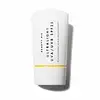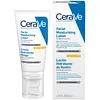What's inside
What's inside
 Key Ingredients
Key Ingredients

 Benefits
Benefits

 Concerns
Concerns

 Ingredients Side-by-side
Ingredients Side-by-side

Water
Skin ConditioningEthylhexyl Methoxycinnamate
UV AbsorberButylene Glycol
HumectantEthylhexyl Palmitate
EmollientGlycerin
HumectantDipropylene Glycol
HumectantEthylhexyl Salicylate
UV AbsorberOctocrylene
UV AbsorberDiethylamino Hydroxybenzoyl Hexyl Benzoate
UV FilterHydrogenated Lecithin
EmulsifyingPentylene Glycol
Skin ConditioningBis-Ethylhexyloxyphenol Methoxyphenyl Triazine
Skin ConditioningEthylhexyl Triazone
UV AbsorberSodium Hyaluronate
HumectantStearyl Glycyrrhetinate
Skin ConditioningBetaine
HumectantPhenoxyethanol
PreservativeCarbomer
Emulsion StabilisingAcrylates Copolymer
Sodium Hydroxide
BufferingPentasodium Pentetate
BHT
AntioxidantWater, Ethylhexyl Methoxycinnamate, Butylene Glycol, Ethylhexyl Palmitate, Glycerin, Dipropylene Glycol, Ethylhexyl Salicylate, Octocrylene, Diethylamino Hydroxybenzoyl Hexyl Benzoate, Hydrogenated Lecithin, Pentylene Glycol, Bis-Ethylhexyloxyphenol Methoxyphenyl Triazine, Ethylhexyl Triazone, Sodium Hyaluronate, Stearyl Glycyrrhetinate, Betaine, Phenoxyethanol, Carbomer, Acrylates Copolymer, Sodium Hydroxide, Pentasodium Pentetate, BHT
Water
Skin ConditioningHomosalate
Skin ConditioningGlycerin
HumectantOctocrylene
UV AbsorberEthylhexyl Salicylate
UV AbsorberNiacinamide
SmoothingAluminum Starch Octenylsuccinate
AbsorbentButyl Methoxydibenzoylmethane
UV AbsorberDimethicone
EmollientCetearyl Alcohol
EmollientPEG-100 Stearate
Glyceryl Stearate
EmollientPhenoxyethanol
PreservativeStearic Acid
CleansingBehentrimonium Methosulfate
Caprylyl Glycol
EmollientPalmitic Acid
EmollientAmmonium Polyacryloyldimethyl Taurate
Emulsion StabilisingXanthan Gum
EmulsifyingDisodium EDTA
Tocopherol
AntioxidantSodium Lauroyl Lactylate
EmulsifyingMyristic Acid
CleansingSodium Hyaluronate
HumectantCeramide NP
Skin ConditioningCeramide AP
Skin ConditioningPhytosphingosine
Skin ConditioningCholesterol
EmollientCarbomer
Emulsion StabilisingEthylhexylglycerin
Skin ConditioningCeramide EOP
Skin ConditioningWater, Homosalate, Glycerin, Octocrylene, Ethylhexyl Salicylate, Niacinamide, Aluminum Starch Octenylsuccinate, Butyl Methoxydibenzoylmethane, Dimethicone, Cetearyl Alcohol, PEG-100 Stearate, Glyceryl Stearate, Phenoxyethanol, Stearic Acid, Behentrimonium Methosulfate, Caprylyl Glycol, Palmitic Acid, Ammonium Polyacryloyldimethyl Taurate, Xanthan Gum, Disodium EDTA, Tocopherol, Sodium Lauroyl Lactylate, Myristic Acid, Sodium Hyaluronate, Ceramide NP, Ceramide AP, Phytosphingosine, Cholesterol, Carbomer, Ethylhexylglycerin, Ceramide EOP
 Reviews
Reviews

Ingredients Explained
These ingredients are found in both products.
Ingredients higher up in an ingredient list are typically present in a larger amount.
Carbomer is a polymer of acrylic acid. Its main role is to create a gel consistency.
A high amount of carbomer can cause pilling or balling up of products. Don't worry, most products contain 1% or less of carbomer.
Ethylhexyl Salicylate is an organic compound used to block UV rays. It primarily absorbs UVB rays but offers a small amount of UVA protection as well.
Commonly found in sunscreens, Ethylhexyl Salicylate is created from salicylic acid and 2-ethylhexanol. You might know salicylic acid as the effective acne fighter ingredient and BHA.
The ethylhexanol in this ingredient is a fatty alcohol and helps hydrate your skin, similar to oils. It is an emollient, which means it traps moisture into the skin.
According to manufacturers, Ethylhexyl Salicylate absorbs UV wavelength of 295-315 nm, with a peak absorption at 307-310 nm. UVA rays are linked to long term skin damage, such as hyperpigmentation. UVB rays emit more energy and are capable of damaging our DNA. UVB rays cause sunburn.
Learn more about Ethylhexyl SalicylateGlycerin is already naturally found in your skin. It helps moisturize and protect your skin.
A study from 2016 found glycerin to be more effective as a humectant than AHAs and hyaluronic acid.
As a humectant, it helps the skin stay hydrated by pulling moisture to your skin. The low molecular weight of glycerin allows it to pull moisture into the deeper layers of your skin.
Hydrated skin improves your skin barrier; Your skin barrier helps protect against irritants and bacteria.
Glycerin has also been found to have antimicrobial and antiviral properties. Due to these properties, glycerin is often used in wound and burn treatments.
In cosmetics, glycerin is usually derived from plants such as soybean or palm. However, it can also be sourced from animals, such as tallow or animal fat.
This ingredient is organic, colorless, odorless, and non-toxic.
Glycerin is the name for this ingredient in American English. British English uses Glycerol/Glycerine.
Learn more about GlycerinOctocrylene protects skin from sun damage. It absorbs UV-B with peak absorption of 304 nm. It is a common sunscreen ingredient and often paired with avobenzone, a UVA filter. This is because octocrylene stabilizes other sunscreen ingredients by protecting them from degradation when exposed to sunlight. Octocrylene is a photostable ingredient and loses about 10% of SPF in 95 minutes.
Octocrylene also acts as an emollient, meaning it helps skin retain moisture and softens skin. It is oil-soluble and hydrophobic, enhancing water-resistant properties in a product.
Those who are using ketoprofen, a topical anti-inflammatory drug, may experience an allergic reaction when using octocrylene. It is best to speak with a healthcare professional about using sunscreens with octocrylene.
The EU allows a maximum of these concentrations:
Learn more about OctocrylenePhenoxyethanol is a preservative that has germicide, antimicrobial, and aromatic properties. Studies show that phenoxyethanol can prevent microbial growth. By itself, it has a scent that is similar to that of a rose.
It's often used in formulations along with Caprylyl Glycol to preserve the shelf life of products.
Sodium Hyaluronate is hyaluronic acid's salt form. It is commonly derived from the sodium salt of hyaluronic acid.
Like hyaluronic acid, it is great at holding water and acts as a humectant. This makes it a great skin hydrating ingredient.
Sodium Hyaluronate is naturally occurring in our bodies and is mostly found in eye fluid and joints.
These are some other common types of Hyaluronic Acid:
Learn more about Sodium HyaluronateWater. It's the most common cosmetic ingredient of all. You'll usually see it at the top of ingredient lists, meaning that it makes up the largest part of the product.
So why is it so popular? Water most often acts as a solvent - this means that it helps dissolve other ingredients into the formulation.
You'll also recognize water as that liquid we all need to stay alive. If you see this, drink a glass of water. Stay hydrated!
Learn more about Water